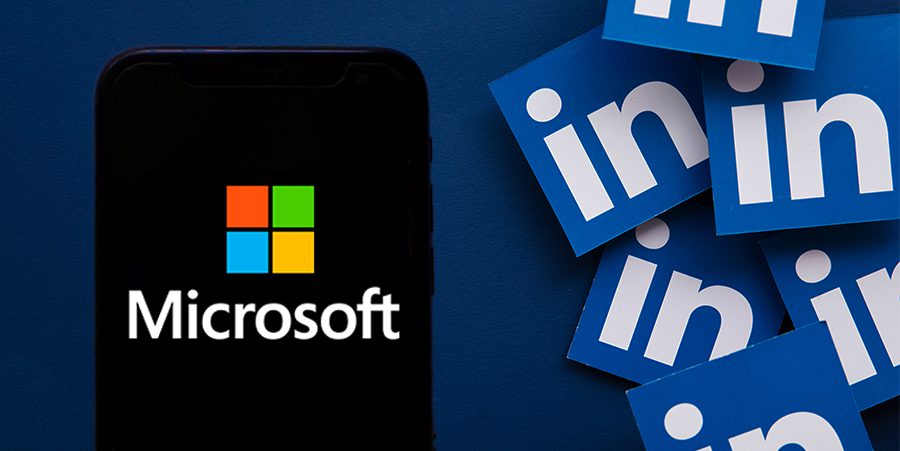In this article, we’ll explore the innovative collaboration between LinkedIn and Microsoft Entra that aims to enhance credibility on the professional social network by enabling users to verify their workplace with digital employee IDs.
Key Takeaways:
- LinkedIn users can now verify their workplace with Microsoft Entra Verified ID.
- Digital employee IDs can be easily shared and verified on LinkedIn profiles.
- The triangle of trust model ensures secure and trustworthy verification.
- Verified IDs can be utilized for various purposes such as verifying personal backgrounds, offering incentives, and so on.
- The feature is being tested with over 70 organizations before a wider rollout.
Strengthening Trust with Verified Work Credentials
In today’s fast-paced digital world, it’s become increasingly important for professionals to establish trust and credibility within their online networks.
With that in mind, LinkedIn and Microsoft Entra have teamed up to introduce a groundbreaking solution that aims to enhance the confidence users have in the authenticity of their connections.
This new feature enables LinkedIn members to verify their workplace affiliations through Microsoft Entra Verified ID.
By obtaining digital employee IDs, users can showcase their genuine work credentials, making it easier for others to trust that they are who they claim to be.
This is a significant step towards fostering more reliable and secure professional connections in the online sphere.
Verifying LinkedIn Members’ Workplaces
The process of verifying a LinkedIn member’s workplace is designed to be user-friendly and efficient.
Organizations can use Microsoft Entra Verified ID to create customized digital employee IDs, which are tailored to their specific brand and business requirements.
This allows for a seamless integration of verified work credentials into the LinkedIn platform.
Once an employee has received their digital ID from their organization, they can easily add it to their LinkedIn profile.
This verification will then be displayed prominently, enabling other users to view and confirm their workplace affiliations with just a few clicks.
The simplicity of this process is aimed at encouraging widespread adoption, ultimately leading to a higher degree of trust and credibility across the entire LinkedIn network.
The Triangle of Trust: A Secure Verification Model
At the core of this innovative approach to verification is a concept called the triangle of trust. This model involves three parties – the issuer, the holder, and the verifier – working together to ensure a secure and trustworthy verification process.
In the context of workplace verification, an organization acts as the issuer by cryptographically signing a digital credential and issuing it to an employee as their digital employee ID.
The employee, as the holder of the credential, can then decide to share their ID with apps and websites, such as LinkedIn.
Finally, the verifier is responsible for cryptographically authenticating that the digital employee ID is genuine and has been issued by the correct workplace.
This triangle of trust provides a solid foundation for secure, convenient, and reliable verification of digital information on a large scale.
Potential Applications of Verified IDs
While the primary focus of this collaboration between LinkedIn and Microsoft Entra is to enhance trust within professional networks, the potential applications of verified IDs extend far beyond this purpose.
One possible use case is in the realm of background checks. By having a verified digital employee ID, it could become much easier for employers to conduct background checks on potential hires, significantly streamlining the process and reducing the time and resources spent on manual verification.
Another area where verified IDs could have a substantial impact is reward programs.
Companies can leverage these digital credentials to create more efficient and secure reward systems, further enhancing employee engagement and satisfaction.
These examples represent just a few of the many potential applications of verified IDs.
As this technology continues to develop, we can expect to see even more innovative uses for digital employee IDs across various industries and scenarios.
The Future of Workplace Verification
Currently, over 70 organizations, including Accenture, Avanade, and Microsoft, are testing this new workplace verification feature on LinkedIn.
The valuable feedback provided by these organizations will help ensure a smooth and secure user experience when the feature is rolled out to millions of LinkedIn members later this month.
But this is only the beginning. As the triangle of trust model gains traction and the technology behind verified IDs continues to evolve, we can anticipate further advancements in the realm of digital identity verification.
These developments will likely encompass not just workplace credentials, but also other aspects of our identity, such as education and skills.
Conclusion
The partnership between LinkedIn and Microsoft Entra brings an innovative solution to establish trust and credibility in the digital world.
By using Microsoft Entra Verified ID to create custom digital employee IDs, LinkedIn members can easily showcase their authentic workplace affiliations.
This new approach not only enhances the trustworthiness of online professional interactions but also streamlines processes such as background checks and rewards programs.
As this technology continues to develop, we can expect to see even more secure and convenient ways to verify digital information at scale.
 Sections of this topic
Sections of this topic
















